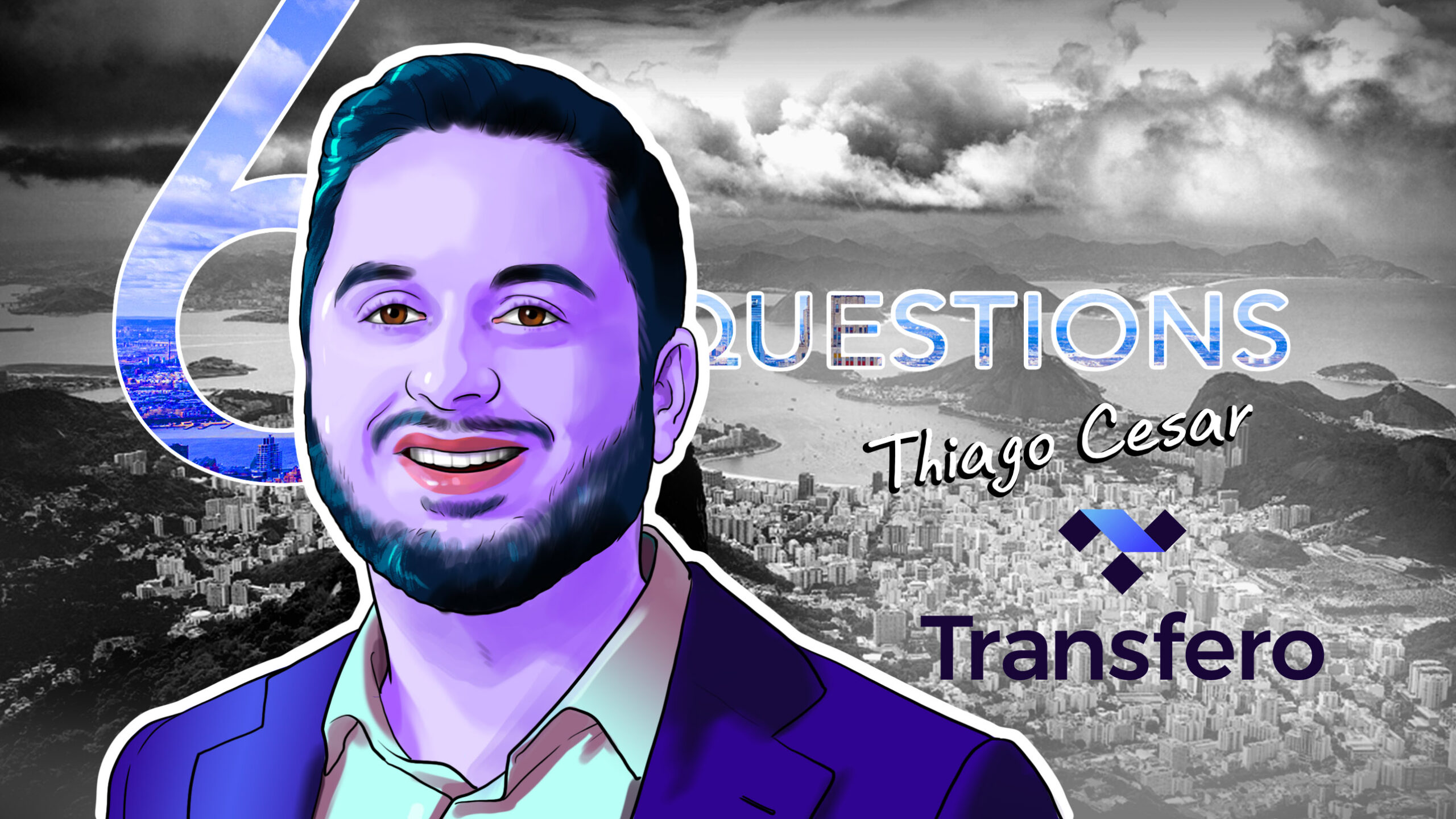Thiago Cesar is the 34-year-old co-founder of Transfero, a company helping to make crypto more accessible for Brazilians with BRZ, the first stablecoin pegged to the Brazilian real.
Cesar grew up in southern Brazil’s Pindamonhangaba municipality, before making the 90-mile trek to Sao Paulo for college. He graduated from Fundação Armando Alvares Penteado, and it wasn’t long, Cesar says, before he became infatuated with Bitcoin as a graduate student at the University of London.
“By 2014, I’d been convinced that Bitcoin and cryptocurrencies in general were going to be a big thing,” Cesar says, leading him to author his graduate thesis on the “competitive and comparative advantages that Bitcoin could bring to a business.”
In 2015, Transfero was born.
What inspired you to start Transfero?
Transfero was a joint dream between me and my four Brazilian co-founders. We met in Rio de Janeiro just after I returned from the University of London in 2015, where coincidentally, I wrote my master’s thesis about Bitcoin.
Cointelegraph’s Rudy Takala, Transfero’s Thiago Cesar and Tezos co-founder Kathleen Breitman. (Thiago Cesar)
One of my co-founders, Marlyson Silva, had previous experience in the payments industry and developed a payment gateway that could also process Bitcoin transactions. The system immediately converted Bitcoin into reais, so merchants didn’t have to worry about price fluctuations.
Being a crypto-native group, our idea was to leverage everything that a borderless and permissionless asset class could provide. Brazil and other neighboring countries were always financially limited in some way: be it due to inflation-inducing economic policy like in Argentina, or a rigid FX market with some degree of capital controls like in Brazil.
Crypto can fill multiple gaps for citizens coming from emerging markets. Asset protection, international remittance rails, portfolio diversification and so on. Transfero builds on top of legacy financial technologies in LATAM — such as PIX in Brazil — and combines the abovementioned crypto elements to deliver products and services that solve real-world pains that are common in emerging markets.
What are the biggest things Transfero is doing?
Transfero is one of the largest fiat ramps in Brazil and Argentina. Multiple international businesses — crypto and non-crypto related — use Transfero to receive deposits and perform payments within the Brazilian and Argentine banking systems.
Also read: Bitcoin is on a collision course with ‘Net Zero’ promises
Transfero is also the issuer of BRZ, a stablecoin for BRL. That’s the basis for our stablecoin settlements for flows between the United States, Europe, Asia and Latin America.It is a synthetic representation of BRZ, as the actual BRL currency is non-deliverable. That means international companies can’t carry it unless they have bank accounts in Brazil.
You also started the Transfero Academy. What’s its goal?
Transfero Academy is an educational program for Brazilians from vulnerable neighborhoods. We offer a full-time blockchain technical course, which prepares students for a career in crypto. We have a 95% employment rate for students who have graduated.
Transfero Academy changed the lives of hundreds of students; now we’re partnering up with governmental and private educational groups throughout the country.
Cryptocurrency has a higher adoption rate in Brazil than any other country in Latin America. Why are Brazilians so interested in crypto?
Crypto opened up the international financial world to Brazilians. Not a lot of people know, but in Brazil, you can only have bank accounts denominated in BRL, and retail traders can only trade stocks on a local exchange called B3.
When Bitcoin, Ethereum and stablecoins arrived, Brazilians could finally access international platforms and open up their financial horizons. Crypto is not only a different asset class but also an international financial rail for Brazilians.
What brought you to crypto?
Back in 2012, when I was working for a South Korean company, a friend told me about some type of “internet money” called Bitcoin that was used for “Deep Web transactions.” I became interested in the subject and started my own research.
Read also
Features
Blockchain and the world’s growing plastic problem
Features
Bitcoin is on a collision course with ‘Net Zero’ promises
As with most people, I didn’t understand much at the time, even after reading the white paper. But when I started buying Bitcoin at the end of 2012, I was amazed by the potential it had for internationalizing money. Coming from Brazil, the idea that I could carry a USD-priced asset that could move or be sent anywhere was groundbreaking for me.
By 2014, I’d been convinced that Bitcoin and cryptocurrencies in general were going to be a big thing. That led me to talk focus on crypto for my master’s thesis at the University of London.
What are your hopes or goals for Transfero on a 5-10 year time horizon?
Transfero is expanding throughout LATAM. Right now, we provide services in Brazil and Argentina, but our main goal is to be the main issuer of stablecoins and fiat ramp for the region, operating a settlement network between emerging markets.
Subscribe
The most engaging reads in blockchain. Delivered once a
week.


Rudy Takala
Rudy Takala is the opinion editor at Cointelegraph. He formerly worked as an editor or reporter in newsrooms that include Fox News, The Hill and the Washington Examiner. He holds a master’s degree in political communication from American University in Washington, DC.
Source: https://cointelegraph.com/magazine/questions-thiago-cesar-transfero/


